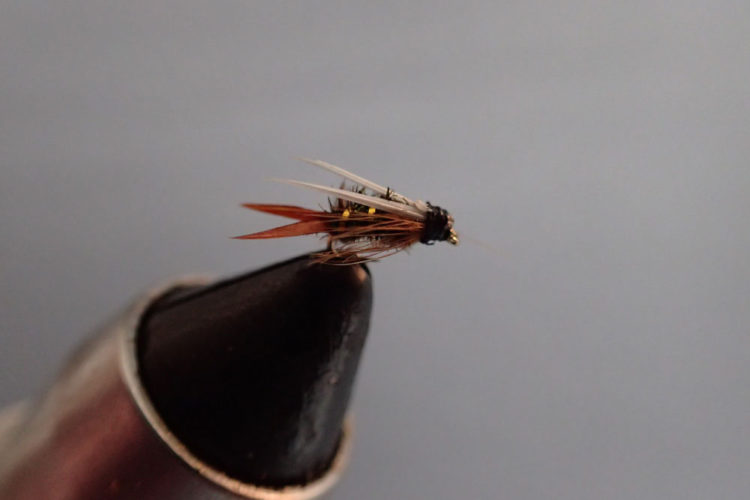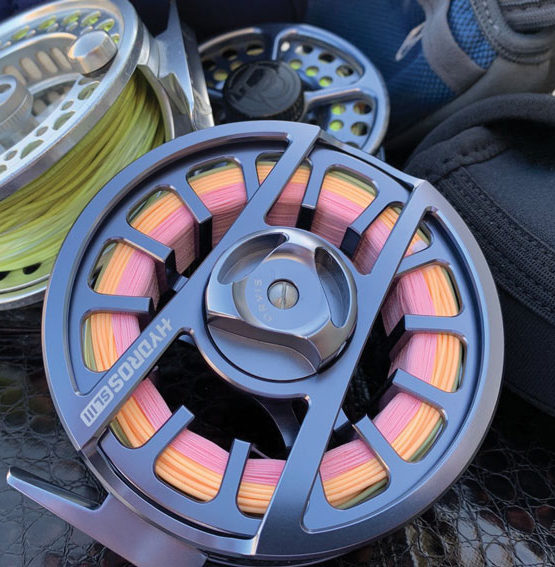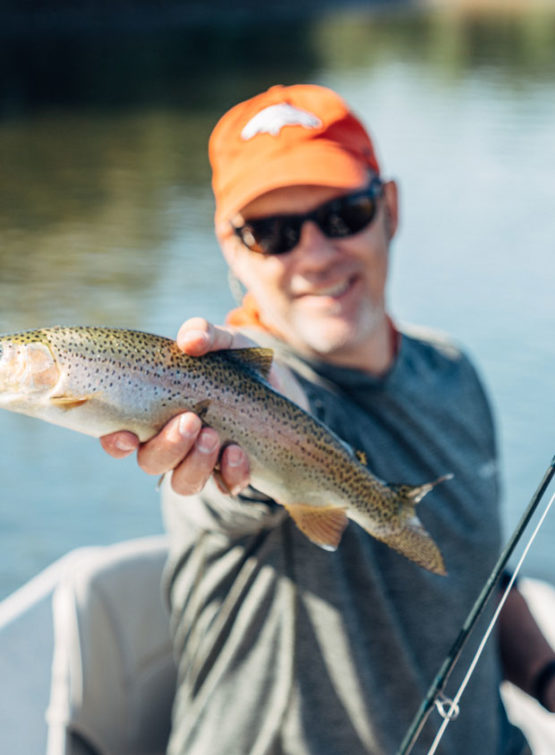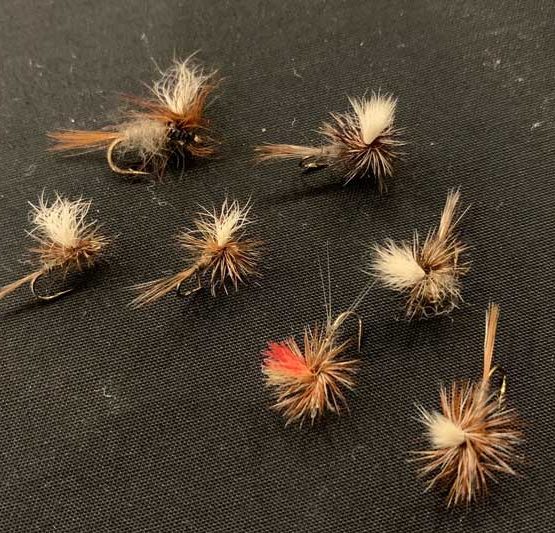As an angler, using the right fly pattern can mean the difference between success or struggle on the water. With that in mind, one of the most important patterns you can keep in your fly box is the Prince Nymph.
This versatile and effective fly pattern has been a staple in fly boxes for decades, and for good reason.
The Prince Nymph is a general-purpose nymph that can imitate a variety of aquatic insects, from stoneflies to mayflies.
Whether you’re fishing in small streams, beaver ponds, or large lakes, you should never hit the water without a few of these bad boys at the ready.
In this article, we’ll take a closer look at the Prince Nymph and why it’s such an essential fly pattern to stock in your fly box.
What is a Prince Nymph?
Developed by Doug Prince, the Prince Nymph is one of the most popular fly patterns of all time. It’s a versatile fly used to imitate a variety of small aquatic insects such as stoneflies and mayflies. It can be fished in nearly every type of freshwater situation, making it a must-have in any angler’s fly box.
How to Fish a Prince Nymph
In general, you should fish the Prince Nymph like you would any other nymph pattern. That means, you’ll want to keep it on or near the bottom of the water column. If you opt for a Prince Nymph with a bead head, I recommend using it as your lead fly in a multi-fly rig.
However, it can also work great as a trailer in a dry-dropper or double nymph rig.
When fishing with a Prince Nymph, it’s important to pay attention to the depth and speed of the water, and adjust the weight of your rig and the length of the leader accordingly.
You can also add a little split shot to your leader to help your Prince Nymph sink more quickly.
Techniques for Fishing with a Prince Nymph
Like most nymphs, there are several techniques you can use when fishing with a Prince Nymph.
One technique you can use is called a dead drift, where you simply cast the fly directly upstream and let it drift naturally downstream with the current.
For best results, I recommend standing in the water and casting directly upstream so that your rig drifts back toward you. Just remember to keep your line slack-free and be ready for a strike, which means you’ll need to strip in the slack line at the same rate as your fly drifts toward you.
Dead-drifting a Prince Nymph is almost always good for a fish or two.
Another technique is to use a swing. To employ this technique, cast your fly upstream and across the current, then let it swing downstream. As your fly reaches the end of your drift, it will start to rise through the water column and imitate an emerging fly, which can result in some of the most spectacular, tail-dancing takes you’ll ever experience.
In stillwater situations, you can also use a stripping technique to make the fly appear more lifelike.
Just cast your fly and let it sink to the bottom. Then, retrieve your line in short, quick strips to imitate the movement of a swimming insect. Try varying your strip length and speed and pay attention to what works best, then repeat! This technique can also be effective in deep, slow-moving water.
Why Is The Prince Nymph So Effective?
In short, the reason a Prince Nymph is so effective is because it imitates so many different insects. The fly’s peacock herl body, white wings, and brown hackle give it a lifelike appearance that can fool even the most selective trout. You might say it’s the perfect combination of attractor and imitator, which is exactly what makes it so irresistible to a hungry trout.
Another reason why the Prince Nymph is so effective is its variety.
The fly can be tied in a variety of sizes and variations, allowing anglers a greater ability to match the hatch and imitate different insects. The fly can be tied with or without a bead head, making it suitable for both fast- and slow-moving waters.
The Prince Nymph is also an excellent prospecting pattern. When fish aren’t actively feeding on a specific insect, the Prince Nymph can be used as a fallback pattern to entice fish to strike and, as such, often serves the role of reliable slump-buster.
This makes it an excellent choice when you’re fishing unfamiliar waters.
Overall, the Prince Nymph’s lifelike appearance, versatility, and effectiveness make it a must-have fly pattern for any angler’s arsenal.
Variations of the Prince Nymph
Beadhead Prince Nymph
The Beadhead Prince Nymph is a variation of the classic Prince Nymph that features, as you might suspect, a bead head.
The addition of the bead head gives the fly a little extra flash and produces a faster sink-rate, making it ideal for fishing in deeper or fast-moving waters. This sink rate attribute is especially true of you’re fishing a nymph with a tungsten bead.
Rubber Leg Prince Nymph
The Rubber Leg Prince Nymph is another popular variation of the Prince Nymph. The addition of the rubber legs add more movement to the fly, making it more attractive to fish. This variation is particularly effective when fishing for trout in streams and rivers with a large stonefly population.
Flashback Prince Nymph
The Flashback Prince Nymph is a variation of the traditional Prince Nymph that features a touch of flashabou on it’s back–hence the name. The flashback material adds a reflective quality to the fly, making it more visible to fish, and a fantastic attractor pattern.
This variation is particularly effective when fishing in low-light conditions or when the water is murky.
Color Variations Worth Trying
While the classic Prince Nymph is tied with a brown body and white wings, there are many color variations worth trying. Some popular color variations include:
- Purple Prince Nymph
- Black Prince Nymph
- Chartreuse Prince Nymph
Each color variation can be effective in different fishing conditions, so I recommend giving them each a try.
5 Nymph Patterns That Work Well With A Prince Nymph
Whenever possible, I recommend fishing the Prince Nymph as part of a two-fly rig. Whether it be a dry dropper or double-nymph rig, doubling the number of flies on your line doubles your chances of catching a fish.
With that in mind, here are a few of my favorite fly patterns to pair with a Prince.
Rainbow Warrior
The Rainbow Warrior is an all-around fantastic fly pattern. It is a flashy and attractive pattern that can mimic a variety of insects. This fly works great when the water is slightly murky, but it can also produce killer results in clear water as well.
Red Copper John
The Red Copper John is another great nymph pattern that pairs well with a Prince Nymph. It’s versatility allows it to be fished in a variety of ways, from a dropper below a dry fly or as the lead fly in a nymph rig.
The Red Copper John is particularly effective in fast-moving water, where its weight and flash can help it stand out and attract fish.
RS2
The RS2 is a simple and effective nymph pattern that can be used in a variety of situations. While it might not look like much, its subtle profile and natural coloration can fool even the most finicky of trout.
I recommend keeping at least a few black, grey, and olive RS2s on hand–just to be safe.
Two-Bit Hooker
The Two-Bit Hooker is a relatively new nymph pattern that has quickly gained popularity among fly fishermen. In my experience, the Two-Bit Hooker is particularly effective in pocket water, where its bold profile and extra weight can fool even the most wary of trout.
San Juan Worm
The San Juan Worm is a classic nymph pattern that’s effective in, well, pretty much any fly fishing situation. It is a simple fly that comes in nearly every color under the sun.
When paired with a Prince Nymph, I typically use a San Juan Worm as my lead bug–but, that’s just personal preference.
5 Dry Flies That Work Great With A Prince Nymph
Hopper
The hopper works great in combination with a Prince Nymph. It imitates a grasshopper, an adult stonefly or salmon fly, a cricket or any number of large insects; all common food sources for trout.
The hopper can be fished on the surface or slightly submerged, and the prince nymph can be tied onto the hook as a dropper.
This combination is most effective during the late summer months when grasshoppers are abundant.
Caddis
The Caddis fly is another great option to use with a Prince Nymph. The Caddis is a common insect in many trout streams and rivers, and the Prince can be used as a dropper to imitate a Caddis pupa–especially if you have a few of the chartreuse variations available.
Parachute Adams (With A Small Prince Nymph)
The Parachute Adams is a classic dry fly pattern that works great when used in combination with a small Prince Nymph–emphasis on small.
Unlike a Caddis or a Hooper, Parachute Adams don’t have the same level of buoyancy. So, if you throw a big ol’ Prince Nymph, it’ll probably just pull your Adams under.
BWO
The Blue Winged Olive (BWO) is a common mayfly in many trout streams and rivers. This is another pattern you should keep on hand at all times.
Like a Parachute Adams, if you choose to trail a Prince Nymph from your BWO, keep your “Princie” on the small side.
Amy’s Ant
The Amy’s Ant is like a floating mattress: it’s big, made of foam, and sure to attract even the sleepiest of trout.
Throw one of these on top of a Prince Nymph, and you might be in for the best day of your life.
Grab Some Prince Nymphs And Hit The Water
Bottom line, if you’re looking for a great all-around, all-year, all-situation fly pattern, the Prince Nymph should be at the top of your list.
It’s a classic pattern that works great with a variety of other flies and can be fished in just about any fly fishing scenario.
So, what are you waiting for? Go get yourself some Prince Nymphs and hit the water. You’re in for a treat!
Disclaimer: This post may contain affiliate links, meaning we will receive a small commission (at no cost to you) if you click through and make a purchase.









